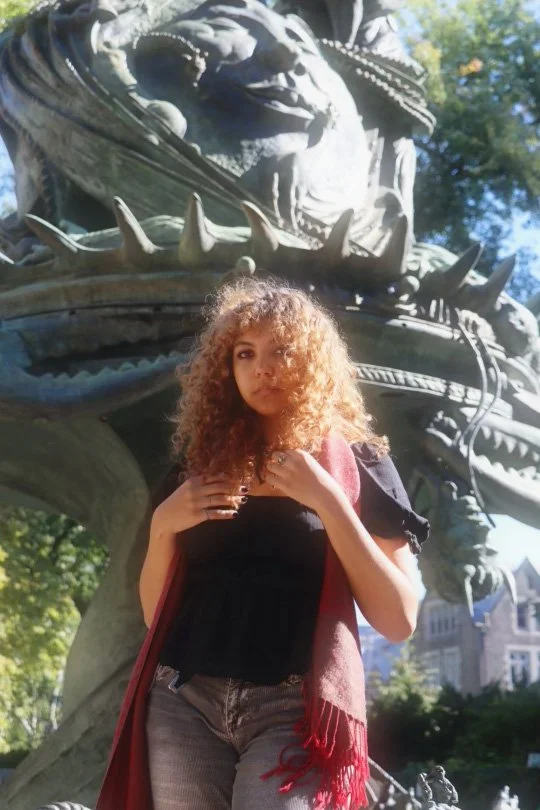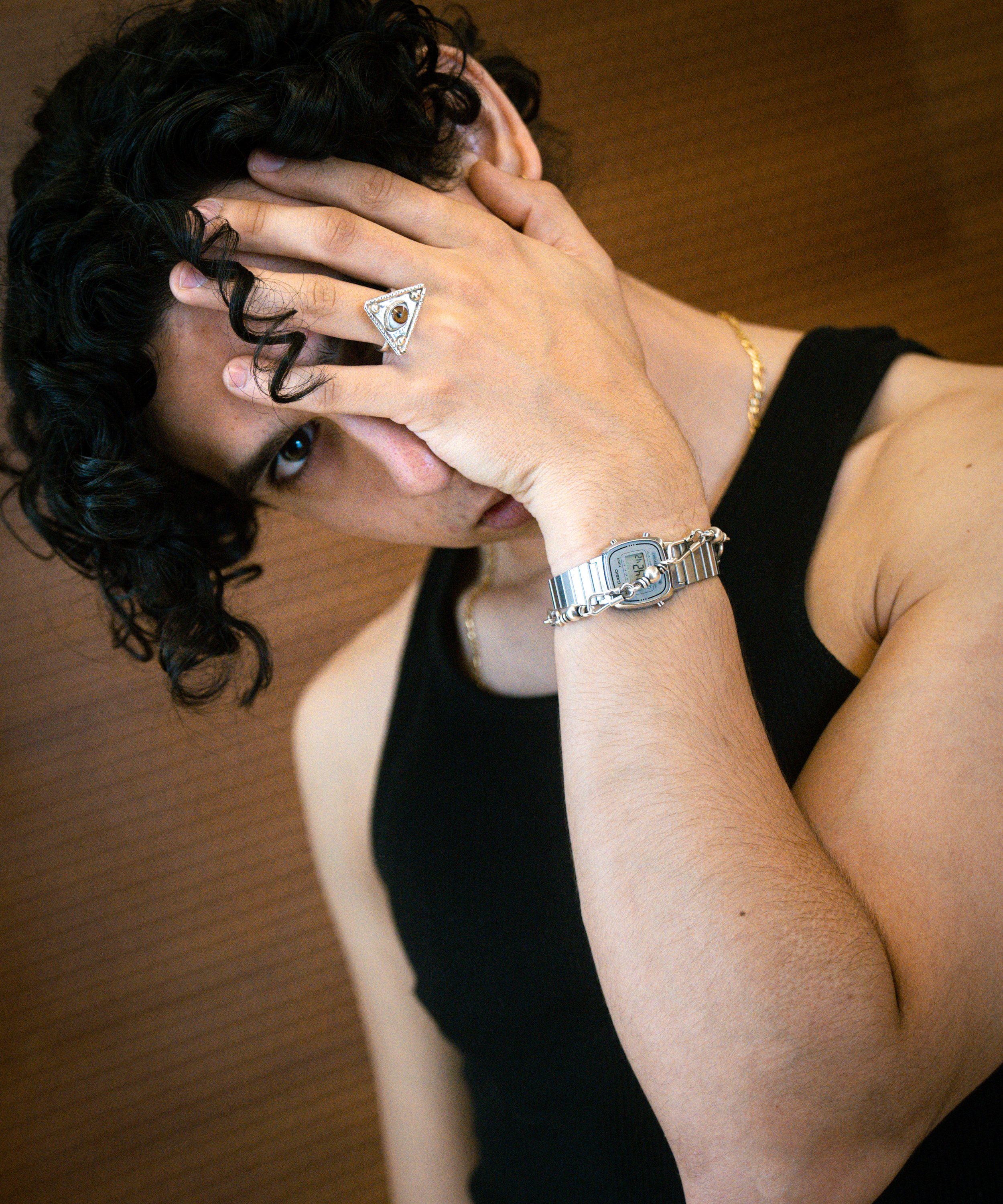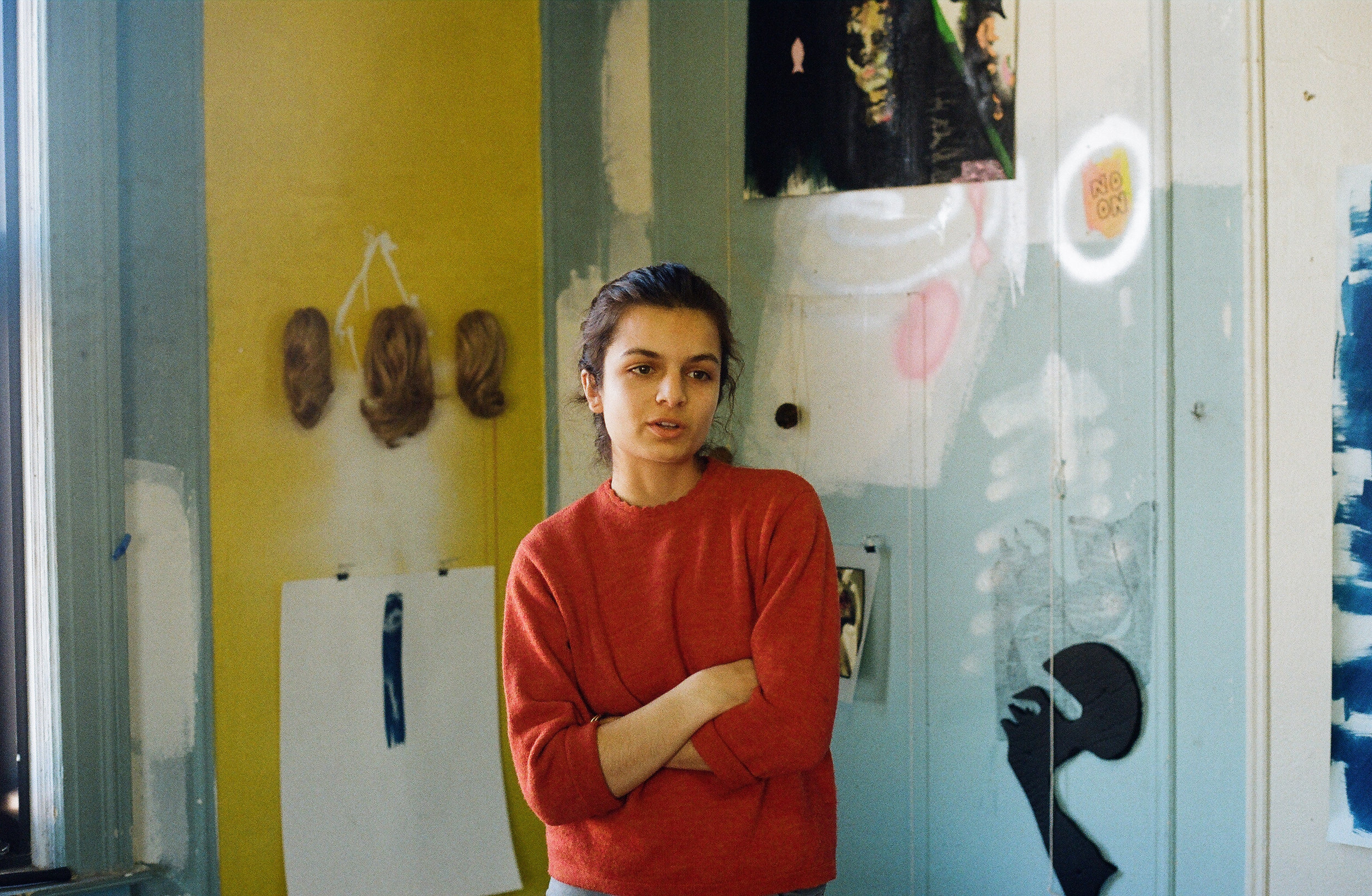
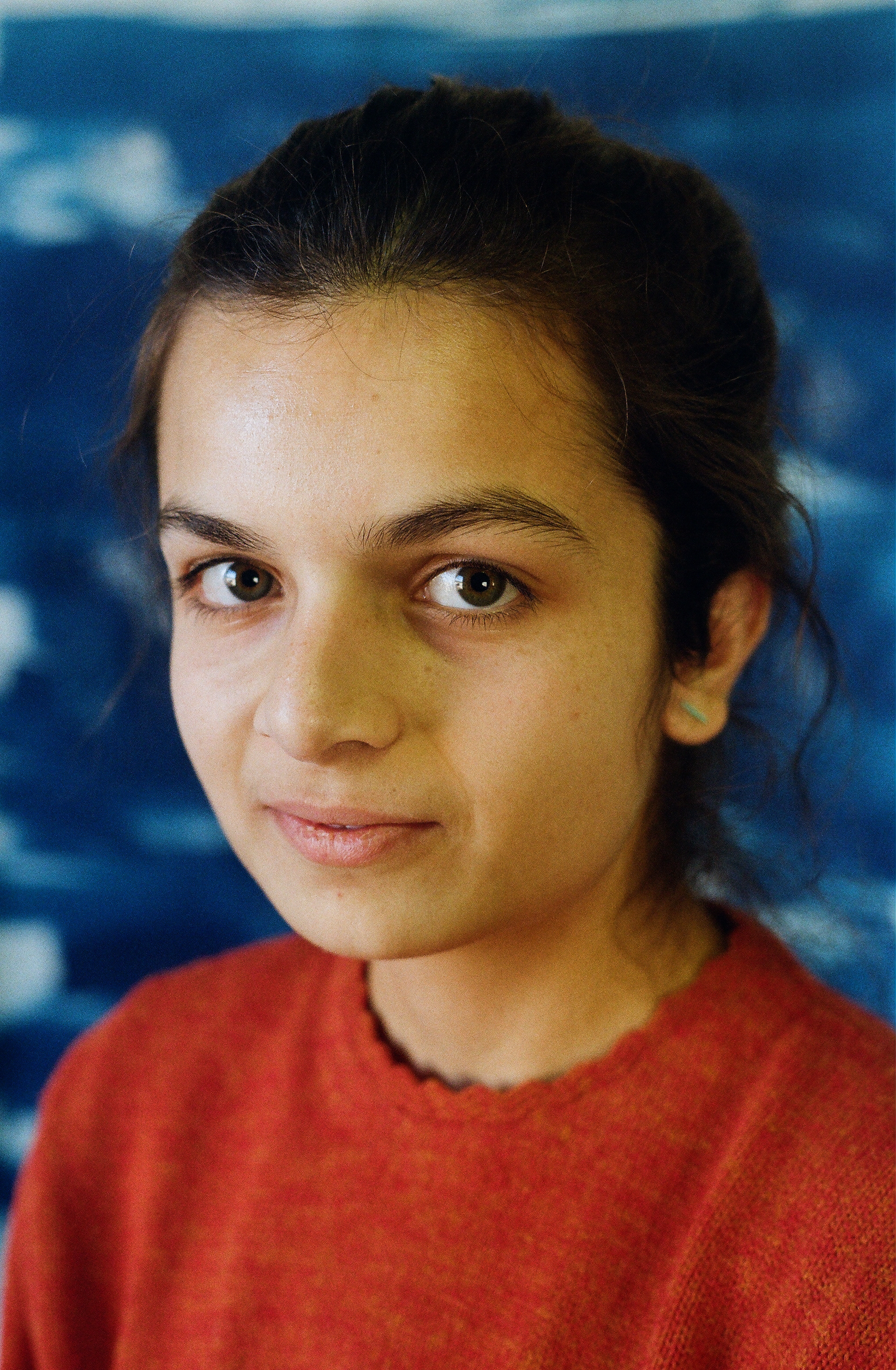
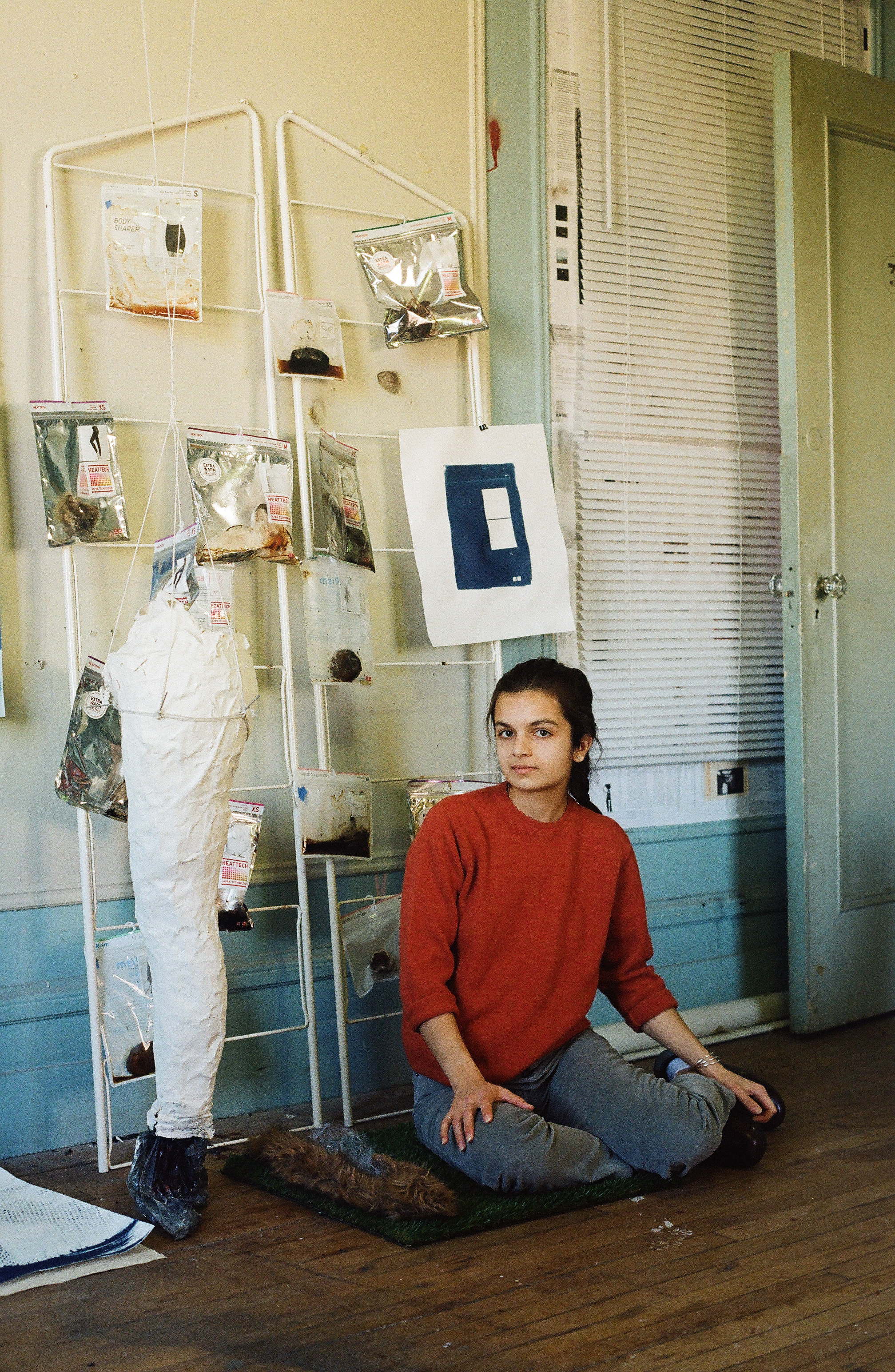
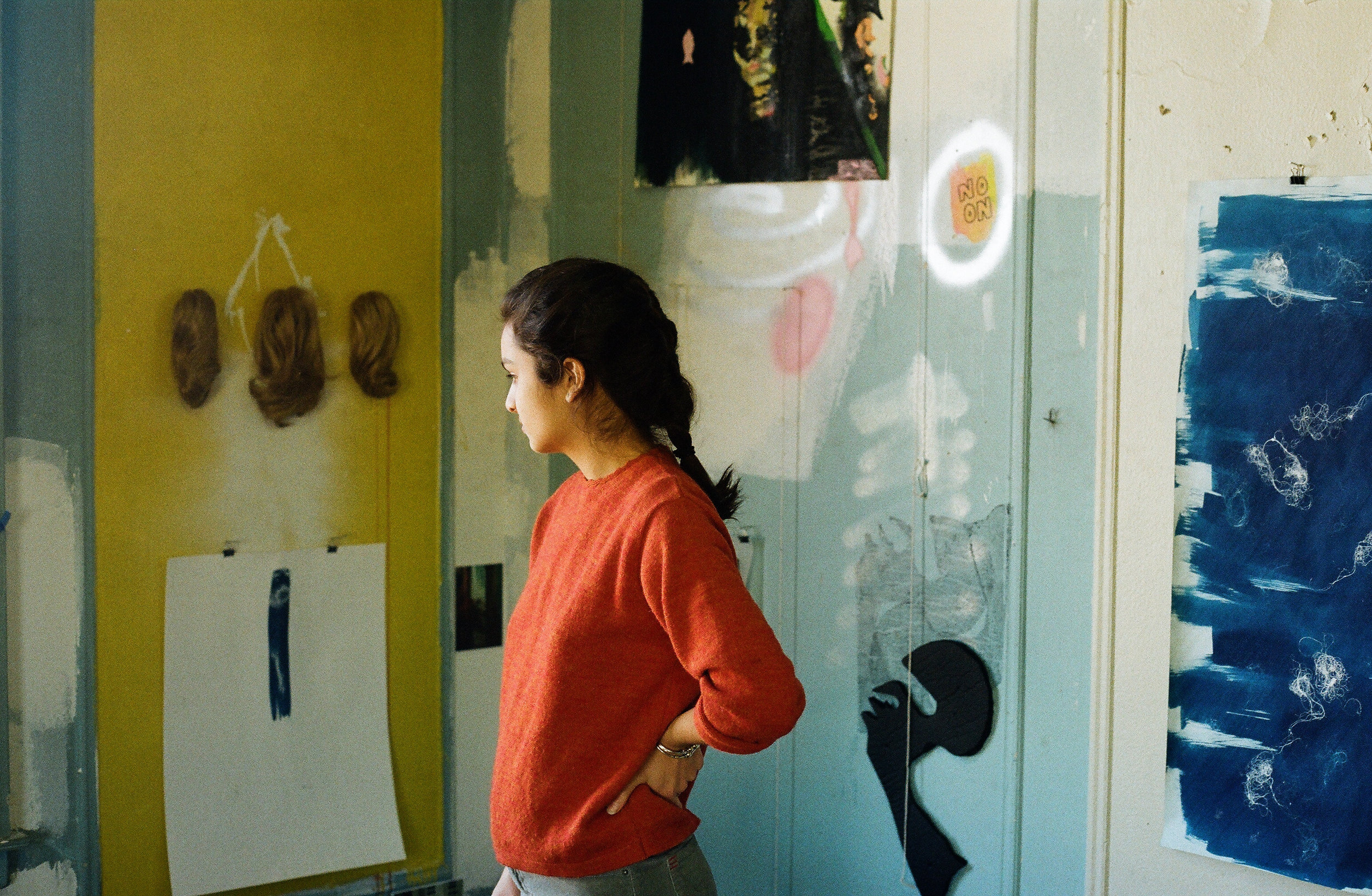
Photography by Caroline Wallis
Interview by Mary Ma
Mira Dayal is an artist, critic, and curator. She grew up in Sudbury, MA and is graduating with a combined major in Visual Arts and Economics at Barnard. Mira’s artwork includes multi-media installations, photography, and drawings. She is the founder and chief editor of the Journal of Art Criticism, an undergraduate contemporary art criticism publication. Her writing has appeared in Hyperallergic, The Brooklyn Rail, NYAQ, as well as other platforms.
Mira’s multimedia and installation work explores relationships between materials, space, and time. She finds creative ways to capture abstract compositions and plays with different ways of representing sensory experiences. Her recent work focuses on the relationship between attraction and repulsion, as well as concepts of decay and disgust.
If you could meet an artist living or dead, who would it be and what would you talk about?
Can I give you three? Joseph Beuys, Lucian Freud, Alice Neel. I recently found out that Alice Neel used to live on 107th street, which is pretty close to where I live on 110th. I just felt this connection to her and I made a painting for the first time in two years after reading about her. I saw Joseph Beuys’ work in Berlin over break; he made these giant sculptures of fat, very geometric and literally made of fat, called Tallow. He has great ways of working through ideas and with very interesting yet disturbing uses of materials. I've been doing some work that's based on his work, so it would be cool to talk to him.
Are there any artists or art movements that have inspired your work or writing?
It's hard to pinpoint specific ones. I draw a lot of my inspiration from contemporary work that I don’t know how to categorize into movements at this point. I think about conceptual art a lot in terms of how I’m making work. “I'm making this thing, what does it mean? If I want to make this idea into an object, how do I do that?” Conceptual art is important as a framework for thinking about the work. In terms of actual materials and execution of the work, my work has more to do with associations between physical objects, domestic space, and the body.
A lot of your work is multi-media, how would you define your relationship with the medium(s) you use?
I started art in high school when I did a lot of drawing. At the time I was working towards photorealism just so I would be able to draw. I did a series of portraits on maps using the lines of the map to create the drawings. I was having fun but once I got to a point where I could draw pretty realistically, I wasn't interested in that anymore because there wasn't much room for exploration. So I stopped drawing for a bit and took a lot of studio classes in painting, sculpture, and photography. I ended up merging all these media together because I started becoming very interested in the photography--I was abstracting what I was seeing into what I could think of as compositions for drawings. Since then I became more interested in capturing textures through photography and drawing representations of those textures--I use materials like graphite powder, oil, and vaseline. I've been thinking more about translating ideas and objects between different media. The sculptural elements emerged naturally out of that process. For example, I started cutting out shapes in yoga mats that echoed shapes in my drawings and used those to make prints. They were fleshy, sticky, and linguistic. Once you start thinking about the materials with which you are working, it becomes a lot more expansive.
How do the materials you use embody your ideas? Can you talk about the transition from concept to material?
In my recent studio work, when I was thinking about materials, the overarching concept I was working with was disgust—creating simultaneous attraction and repulsion for the viewer. Materials like vaseline give the paper a very wet look. After sitting on paper for several months, it no longer has the same kind of sticky surface, but it’s very beautiful because it forms this weird, shining, undulating surface, almost like an ocean. It's very attractive but kind of gross and you don't want to touch it.
A lot of the compositions and “weird” materials come from dreams. Which sounds cheesy, but the way I think about my dreams is that my mind subconsciously combines things that I'm seeing --I think of that as a subconscious collage that has come into a lot of my sculptural stuff. It's a weird process to be delivering the objects of your dreams and making that thing that you feel like you just saw. I once had a dream in which I was reaching to the back of my leg and found that there were all these strange bumps on my skin. It gave me a queasy feeling. Working with that idea of repulsion, I made a cast of my leg and embedded blueberries and almonds into the back of the leg, in the paper-mache, to form the bumps. So that was about how I could get to that sort of visual effect—how do I get the same kind of reaction from the viewer?
What’s your favorite/most challenging material you’ve ever worked with?
Wood was challenging in an exciting way, because I was coming from only working with 2-D work at that point, primarily drawing and painting. It was a different way of making an object --you get outside of making an artwork and it’s like, "Okay, I need to make a box now." You have to be a lot more careful, plan it out, and be more mathematical in figuring out the degrees for cutting the wood or how you are going to sand this thing into a sphere. It was exciting but a totally different process. Just shifting into being able to think that way was challenging.
How do you balance your role as an art critic/writer and an artist?
I started writing about art because I was doing a lot of studio visits. I was interning at A.I.R. Gallery and I was interviewing a lot of artists. I would write up their studio visits as reviews of their work. And still when I’m writing about shows it's often based on my interest in the artist’s process. I try to put myself in the position of the artist when I’m thinking about how to review a show. “What would this mean for someone to be making this?” This definitely comes into my studio practice in that, with a lot of the work that I will get excited about and write about, the ideas and the artists that I'm working with come into my own work. The concept of appropriation itself comes into my work too. A very direct example of this is a drawing I did after I'd seen a ton of shows over one month during the summer. I had the exhibition checklists with details about each work from each show, so I made a drawing in which I copied over all of the little thumbnails on the exhibition checklist. Sometimes the thumbnails would fall apart during the process or I would stop drawing the whole thumbnail and just draw elements of it that were interesting. I think that is representative of how you piece together your own work from all these other ideas that you are seeing, writing or reading about.
Do you write about your own work?
I have to write artist statements for my studio work, but it’s kind of difficult to capture. There are a lot of different ideas I’m trying to work through, but it’s not always helpful for someone else to read about all of them. For example, when I'm reviewing a show, I try to just see the works first and not read the press release beforehand, just to get a fresh read on the work.
One other thing is that sometimes I will see a show or an artist's body of work that is really enticing, but I almost don’t want to write about it because I don’t want to break it, in a way. There are some shows that need to stand on their own, without being pitched by any verbal stakes. I think sometimes I get that feeling because the work is too close to my own interests and I want to just let it be and percolate without having that mode of address. Just leave it there and let it sit. Figure out what it is and why it's working, but not in an overly analytic way.
As a curator, what would you say are some principles or relationships you aim to build in an exhibition space? Feel free to give me specific examples.
The space has always been the same for the shows that I've been doing, which is a gallery with only one actual wall (and three glass walls). It’s not an ideal space in which to curate, but it’s also a nice challenge. The first show I did in there was called Person_Place_Thing, and it was about works that are between physical and digital spaces. For that show, I started with one piece that I was really interested in, called World Wide Simultaneous Dance (1998). The artist (Laura Knott) basically coordinated a bunch of different people from different countries to dance at the same time on live-streamed video, before that was an easy or intuitive thing to do. I was thinking about that as an early example of a way in which physical and digital spaces coincide.
The show that I just did in there was called Residues. Residues were something I was interested in with my work as well. In Residues I was more interested in allowing for connections between works that were not overt and emerged more naturally from the works themselves. I was thinking about psychological and material residues. There was a shower piece by Amanda Turner Pohan that circulated a perfumed fluid that the artist made from measurements of her heartbeat. The residues of that bodily mechanism become the residues of the shower, a perfumed space that you enter into which also forms a residue on your body. There was also a porcelain slip cast of an egg carton by Nicole Kaack in the show. The egg carton burns away in the kiln and the porcelain form is left behind. These works end up having a nice material resonance with each other even though I don't think either artist would have made the other's work. I like that kind of connection.
How did the idea for the Journal of Art Criticism (JAC) come about and what do you envision for it?
When I started writing a lot myself, I was finding that a lot of publications didn’t want an undergraduate student writing for them, especially not in print. In addition, there aren't many undergraduate courses on contemporary art, even though there are a lot of publications out there that are specifically focused on contemporary art. I thought that it would be nice to have an outlet where undergraduates could write, edit, be edited, have conversations with each other about contemporary art, and learn how to run a publication. I want undergraduate student writers to feel like they have an avenue into publishing or writing and a reason to write about contemporary art. The aim is for it to be read by a wider public audience, which is why we stock JAC in bookstores—it gives more credibility to the writers and artists, more weight to undergraduate voices.
You can visit Mira’s website at: https://miradayal.com/


























